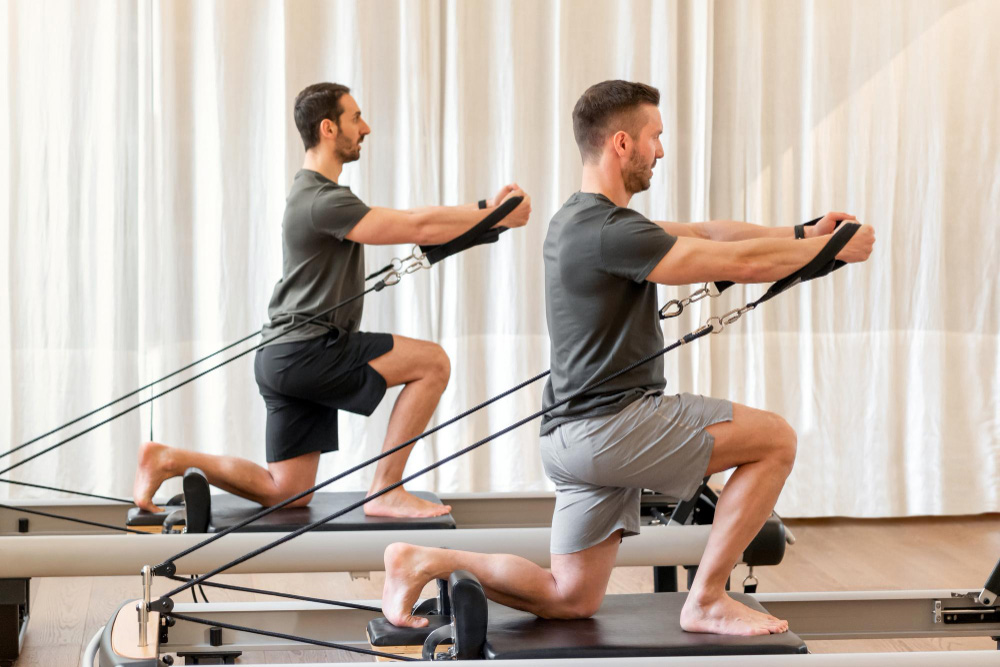In my quest for fitness, one question has often crossed my mind: Which is better, cardio or strength training? If you’re on a similar journey, you’ve likely pondered this age-old dilemma. In this article, I’ll delve into the fitness world, comparing and contrasting the benefits of Cardio vs Strength Training. By the end, you’ll better understand how to strike the perfect balance between these two potent workout regimens.
Cardio vs Strength Training
When it comes to working out, the choices seem endless. Cardiovascular training, often known as “cardio,” and strength training offer distinct advantages, and the ideal choice depends on your fitness goals. I’m here to help you unravel the complexities of this decision and empower you to make the best choice for your body and goals.

Understanding Cardio Training
Cardio Training: Building Endurance and Stamina
Cardiovascular exercise, or Cardio, primarily focuses on activities that elevate your heart rate and increase your breathing rate. These exercises help improve your cardiovascular system’s efficiency and overall endurance. Cardio workouts come in various forms, from brisk walking and running to cycling and swimming.
The Benefits of Cardio Training
Cardio isn’t just about getting your heart rate up. It offers a multitude of benefits, including:
- Improved Cardiovascular Health: Cardio workouts strengthen your heart, reducing the risk of heart disease.
- Weight Loss: Consistent Cardio helps shed excess pounds by burning more calories.
- Stress Reduction: Cardio exercises release endorphins, which alleviate stress and boost your mood.

Strength Training Explained
Strength Training: Building Muscle and Power
On the other hand, strength training focuses on building muscle, increasing power, and enhancing overall strength. This exercise involves resistance, often using weights or your body weight to challenge your muscles and promote growth.
Benefits of Strength Training
Strength training offers a range of advantages, including:
- Increased Muscle Mass: It helps you build muscle, elevating your metabolism.
- Metabolism Boost: Muscles burn calories even at rest, aiding in weight loss.
- Injury Prevention: Building strong muscles and joints can reduce the risk of injury.
The Battle of Cardio vs. Strength Training
Comparing the Two Titans
The showdown between cardio and strength training is more than just a matter of preference—it’s about choosing the right tool for your fitness goals. Cardio is known for its calorie-burning prowess and its role in improving cardiovascular health, while strength training is the path to sculpting a muscular, defined physique. But which is more effective for weight loss and muscle gain?
Weight Loss Dilemma
For those aiming to shed extra pounds, Cardio often takes the lead. It burns calories during the workout and even afterward, thanks to the “afterburn effect.” Strength training, while effective in its own right, may provide a different immediate calorie-burning satisfaction.
The Muscle-Building Conundrum
When it comes to muscle gain, strength training is the undeniable champion. Lifting weights or engaging in bodyweight exercises creates resistance to stimulate muscle growth. While it can help maintain a lean physique, Cardio is only one of the choices for those seeking muscle definition.
Beware of “Skinny Fat”
Here’s the twist: Some individuals who solely rely on Cardio for weight loss may find themselves in the “skinny fat” zone. This means that while they’ve shed pounds, they lack muscle definition, essential for a toned appearance. Strength training can help prevent this scenario.
Tailoring Your Workout Plan
Creating Your Perfect Fitness Formula
The golden rule in fitness is that one size doesn’t fit all. Your fitness plan should be tailored to your specific goals and preferences. Here’s how you can strike a balance between cardio and strength training:
- Set Clear Goals: Define your fitness objectives, whether it’s weight loss, muscle gain, or overall health.
- Frequency and Duration: Determine how often and how long you can commit to working out each week.
- Variety is Key: Incorporate a mix of cardio and strength training exercises to keep things exciting and challenging.
- Listen to Your Body: Pay attention to your body’s signals and adjust your workouts accordingly.

Real-Life Success Stories
Inspiring Journeys
To illustrate the power of Cardio, we have Sarah, who transformed her life through regular running. She lost 50 pounds and significantly improved her cardiovascular health. On the other hand, there’s Mark, who embraced strength training and witnessed impressive muscle growth and a surge in metabolism. These real-life success stories emphasize the potential of both approaches.

Expert Advice
Seeking Wisdom from the Pros
To gain insights into the perfect balance, I consulted with renowned fitness experts:
- Dr. Emily Walker, Cardiologist: “Cardio is essential for heart health, but combining it with strength training offers the best of both worlds.”
- Mike Reynolds, Strength Coach: “Strength training provides the foundation for a strong body. It’s the backbone of any fitness regimen.”
They emphasize that a blend of cardio and strength training can yield exceptional results.
Nutrition and Recovery
Feeding Your Gains and Resting Right
The fitness journey is complete with attention to nutrition and recovery. Your body needs the right fuel and ample rest to perform at its best. Here are some essential tips:
- Balanced Diet: Consume a diet rich in protein, healthy fats, and carbohydrates to support your workouts.
- Rest and Sleep: Ensure you get enough quality sleep and allow your muscles time to recover.
Measuring Progress
Tracking Your Fitness Journey
Monitoring your progress to stay motivated and make necessary adjustments is vital. Use tools like heart rate monitors, body composition scales, and strength benchmarks to measure your advancements.

Case Studies
Real-Life Transformations
Let’s take a look at a couple of case studies to see how different individuals tailored their fitness journeys:
- Case Study 1: Laura’s Cardio Success: Laura lost 30 pounds through consistent running and cycling.
- Case Study 2: Tom’s Strength Training Triumph: Tom achieved a well-defined physique by incorporating weightlifting into his routine.
Finding Your Perfect Balance
Your Fitness Equation
Ultimately, the choice between cardio and strength training is flexible. Your fitness journey should reflect your goals, but remember that a combination of cardio and strength training can offer the best of both worlds. As you embark on your fitness journey, keep experimenting, learning, and adjusting to find your perfect balance.
The Future of Fitness
Embracing Innovation
The world of fitness is ever-evolving, with emerging trends and technologies. The future promises exciting ways to improve your fitness journey, from virtual reality workouts to personalized training apps.

Conclusion
In this comprehensive exploration of “Cardio vs Strength Training,” we’ve dissected the benefits and drawbacks of both workout regimens. Your ideal path to fitness depends on your goals, but remember that a combination of cardio and strength training can offer the best of both worlds. As you embark on your fitness journey, keep experimenting, learning, and adjusting to find your perfect balance.
FAQs
1. Is it better to do Cardio before or after strength training?
It depends on your goals. If you want to maximize strength gains, do strength training first. If weight loss is your priority, start with Cardio.
2. How many days a week should I work out?
The ideal frequency varies, but most experts recommend at least 3-5 days a week for a balanced fitness routine.
3. Can I do cardio and strength training on the same day?
Absolutely! Combining both in one workout session or alternating days effectively balances cardio and strength training.
4. What’s the best way to prevent injury in strength training?
Proper form and technique are crucial. Consider working with a certified trainer to learn the correct movements.
5. What’s the most critical factor in weight loss: diet or exercise?
Both diet and exercise play significant roles in weight loss. A balanced diet, in conjunction with regular exercise, yields the best results.

